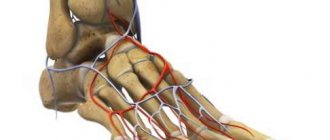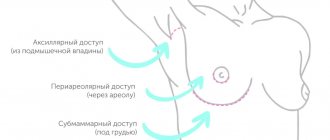Oleg Tchaikovsky: “I correct breast defects and make a person happy”
Despite the fact that the “boom” in plastic surgery has passed, people are still looking for a good surgeon and thinking about what else they could change about themselves.
Cetre' understands the desire to improve oneself and become better. That is why we met with plastic surgeon Oleg Lvovich Tchaikovsky. He told us about plastic surgery trends, Bish's lumps and what rules to follow before going to the doctor. Personality
06/06/2019
At what point did you decide that you wanted to become a plastic surgeon? Oleg Lvovich:
I decided that I would be a doctor at the age of 5. My dad is an ENT doctor, so since childhood I had the opportunity to be in the hospital and watch how my dad treated people. I practically didn’t see my father, because he was either on duty or present at operations. Therefore, almost all the time that we were together passed within the walls of the hospital. For me, the hospital became a second home as a child.
Where is the best place to study plastic surgery in our country?
Oleg Lvovich:
There are a lot of good, strong schools in our country. For example, the Moscow school, the St. Petersburg school, and also a very good school in Kazan. In plastic surgery, in my opinion, it is better to choose your own teachers, since plastic surgeons, basically, choose a particular field and pay special attention to it. They, of course, know how to do everything, but a particular surgeon usually distinguishes only one branch of plastic surgery - what he directly likes. For example, I pay more attention to women's breasts.
How to start your own plastic surgery business
And?
Oleg Lvovich:
Everyone takes a very long time to achieve this. It all starts with the fact that a person goes through certain stages in his medical practice. Most plastic surgeons come from general medicine. Today, these are surgeons who have undergone state medicine and treated patients. But the school is changing. Since plastic surgery in our country is a fairly young specialty, and it is developing very rapidly and intensively - there are many different congresses, many people who teach this. Over the past 10 years, many plastic surgeons have appeared who can provide a large amount of useful information and teach various subtleties of the profession. Also, many different books have been written on the topic of plastic surgery. It turns out that in order to start your own business in this area, you need to go through all these stages, you need to “mature” and come to this decision on your own. You need to know literally everything related to this profession - from the ability to communicate with patients to the treatment of various postoperative risks.
What operations do girls most often seek?
Oleg Lvovich:
Most often these are breast, nose and blepharoplasty. This is the main range of plastic surgeries that are performed. But besides this, plastic surgery such as liposculpture is now gaining momentum. To carry out this operation, a person's own fat is taken from places where there is excess fat and pumped into another area where there is a deficiency. With the help of liposculpture, you can create your ideal body without going to the gym.
Oleg Lvovich, the “boom” that was for breast plastic surgery, has it already passed or is it still ongoing?
Oleg Lvovich:
This “boom” was in America and now continues there. This “boom” means that everyone is getting breasts done. But those girls who come to me, they most often come with some kind of problem - this is when there is a deformation of the breasts, when there are no breasts at all, when a girl just wants to be a girl. And then, of course, it makes sense to correct something so that the person feels beautiful, confident, so that the girl feels comfortable, and she does not hesitate to undress on the beach or in front of her boyfriend or husband. I correct breast defects and make a person happy.
Have you ever had to dissuade girls from having surgery?
Oleg Lvovich:
Yes, I do this very often. I examine the person and, if I see that everything is in order and no intervention is required, then I try to dissuade the person from surgery. I once refused a girl who was a size three, but she wanted a size five.
Is it possible to distinguish plastic surgeries of Russian women from plastic surgeries of foreign girls?
Oleg Lvovich:
Yes. Now there is a tendency that a lot of our girls who emigrated to other countries fly from there to have plastic surgery in Russia. I have many such patients. As a rule, this is due to the fact that their concept of beauty differs from the concept of beauty of foreign plastic surgeons. It also comes down to the mentality of the countries. For example, in America, girls try to show that they have had plastic surgery, they try to emphasize it. Our girls, on the contrary, hide this fact and ask to perform the operation as “naturally” as possible.
Please tell me about Bish's lumps.
What are they and why is everyone so eager to remove them? Oleg Lvovich:
Bisha's lumps are fatty deposits in the cheek area. Today it is fashionable for a girl’s face to have such a v-shape, so girls try to remove these lumps of Bisha so that there is a slight recess in this area. When a girl is thin and has a rounded face shape, this can be achieved with the help of makeup, but when a girl has a rounded face and these fatty lumps are quite developed, then this indication appears for the removal of Bisha's lumps. This operation is carried out only according to the doctor’s indications, since with age the elasticity of human tissues is lost and therefore there may be a strong retraction in this area, which, on the contrary, will only disfigure the face.
What rules should you follow before going to a plastic surgeon?
Oleg Lvovich:
The first rule: you need to choose a surgeon you trust. To trust a person, girls usually rely on the experience of their friends or acquaintances, or simply follow this or that plastic surgeon on social networks. The second rule: research the doctor with whom you want to have surgery. Watch his work for some time and decide for yourself whether it is worth contacting this specialist. The third rule is the doctor’s charisma and the fourth rule is to take into account the doctor’s results.
Interviewer: Diana Gandaloeva Photo: Emilia Traum
Plastic surgeon Oleg Tchaikovsky
January 12, 2022
Patients improve their appearance to improve their self-esteem and to be more competitive in a globalized world where appearance is a determining factor for success. Most people search for suitable options for a long time and consult with several plastic surgeons before deciding who to have surgery. They strive for excellence and complete satisfaction, best prices and high expectations. Fortunately, complications in this area of medicine are rare, but are often catastrophic and, to a lesser extent, can be fatal. As with other applications of surgical anesthesia, adherence to existing guidelines is imperative to avoid any possible adverse effects.
Today we will review several aspects related to complications that can arise in the perioperative period in people who undergo plastic surgery under anesthesia.
In this clinical situation, there are certain general rules of paramount importance, which should always be given due attention in order to avoid unexpected complications. To do this, it is necessary to study plastic surgery patients in terms of factors that may be important in preventing adverse outcomes.
Comprehensive preoperative assessment
It is vital for all patients who undergo plastic surgery. Clinical assessment provides a simple, inexpensive, and effective way to reduce catastrophic incidents and complications.
During the pre-anesthetic assessment, two main groups of clients are considered - healthy people and patients with systemic pathologies that affect their physical condition. The preoperative evaluation includes a complete medical history with a physical examination. Specific laboratory and other tests are performed on each patient depending on their past medical history and the results of previous tests. The current trend is to minimize this type of testing; however, this should not be allowed. Perform routine examinations, always requiring an electrocardiogram for patients with hypertension, a history of cardiovascular disease, diabetics and healthy people over 50 years of age.
Informed consent
All patients must be informed about the technical aspects and risks of anesthesia!
The patient and his/her relatives or guardians must be properly informed about the technical aspects and risks of surgery and anesthesia. This document is an indicator of communication between patients and their doctors and should be as complete as possible. Although it is almost absurd to mention all the risks inherent in every procedure, it is vital to talk about the most common complications and the possibility of catastrophic failure, always leaving an open dialogue for any questions that may arise.
Surgical block
Ambulatory surgery staff must receive continuing education to keep their certifications up to date: surgeons, anesthesiologists, nurses, secretaries, and even receptionists. Educational programs improve the safety and efficiency of medical-surgical care systems. Thus, the American doctor Shapiro and his group used a high-fidelity simulator that simulates various critical scenarios in plastic surgery conditions. Based on the results of the experiment, they noted a high degree of acceptance and validity, awakening the participant's (healthcare worker) interest in the importance of changing processes that improve patient safety and prevent errors.
Patient safety
Perioperative safety is a primary goal of comprehensive care for all patients;
Anesthesiologists, surgeons, nurses, and nursing staff have guidelines in their work to improve safety in this surgical environment by strengthening preventative measures, assessment, preoperative and postoperative care to avoid complications. In the operating room, patient safety is a shared responsibility among professionals and employees who directly or indirectly interact with patients. The responsibilities of anesthesiologists vary from the assessment of the patient's condition to the technique of anesthesia, but the boundaries can be expanded beyond the point where physicians use drugs with a prolonged pharmacological effect. Adequate monitoring (cardiorespiratory, temperature, neurological, metabolic or neuromuscular blockade), positioning the patient on the operating table to avoid neurovascular compression injuries, placement of anti-embolic devices, maintaining normothermia, protecting the face and eyes, positioning the head and preventing burns are just Some of the aspects for which anesthetists are responsible during the transoperative and postoperative period. Proper airway management is sometimes a challenge, as there is always the possibility of anatomical abnormalities in the patient, making it difficult or even impossible to maintain a safe airway.
WHO started its Safe Surgery Program which has proven important in reducing errors. Regardless of the surgical procedure—minor or major—these guidelines list 10 key points:
- correct surgical site
- safe anesthesia
- airway monitoring
- blood flow monitoring
- avoid known allergies
- minimize the risk of surgical infections
- prevent the entry of foreign bodies
- correctly determine the biopsy
- establish effective communication between the surgical team
- systematically monitor the results of surgical intervention.
It is advisable to stick to this simple and very effective list. In plastic surgery, it should be emphasized that it is important to identify the risks of deep vein thrombosis and pulmonary embolism (DVT/PE) and establish that patients may benefit from prophylactic anticoagulation. Patients with hypertension should also be identified because of the implications not only for the cardiovascular and central nervous system but also for perioperative bleeding.
Operation time
In Russia, all plastic surgeries under anesthesia must be performed in the presence of an anesthesiologist
The length of time a patient remains under anesthesia is directly related to the incidence of complications; Hypothermia, deep vein thrombosis, pulmonary embolism, coagulation changes, bleeding, changes in the immune system, and neurovascular compression are among the common disadvantages of prolonged surgical anesthesia. In plastic surgery, there are procedures that require a long time, such as in patients with combined surgeries and post-bariatric cases with large weight loss.
Unfortunately, today there is not enough information about the relationship between anesthesia and these complications. US doctor Phillips et al studied the relationship between the duration of anesthesia and the incidence of adverse effects in 2595 plastic surgeries performed under general anesthesia and found that the majority were women with an average age of 41 years. These authors divided their patients into two groups (less than 4 or more than 4 hours of anesthesia):
- nausea and vomiting (2.8 vs. 5.7%, p = 0.0175)
- urinary retention (0.7 vs. 7.6%, p
Another study of 1,200 respondents with facial plastic surgery performed under anesthesia compared patients with anesthesia times of less than 4 hours (14%) and longer anesthesia (86%). There were no catastrophic complications, and morbidity in 100% of patients was minimal: one patient had respiratory failure, one patient had a central nervous system deficiency, and one patient had an allergic reaction to medications. There were 6 cases of prolonged recovery from anesthesia. The incidence was similar in both groups.
These two studies showed that the timing of general anesthesia was not a major factor in the immediate development of the complication in these patients.
Surgeon without anesthesiologist
It is a controversial context when plastic surgeons consider themselves qualified to perform certain procedures with local anesthesia and superficial sedation without the presence of an anesthesiologist. Examples of these procedures vary depending on the types of corrections and interests of each surgeon, such as filler injections, blepharoplasty... But the point is that every surgical procedure should be properly supervised by an anesthesiologist responsible for the safety of the patient, and thus allow the surgeon to concentrate on his actions without distracting his attention when observing the patient. Although complications are rare, it is impossible to predict with certainty a negative incident, such as an allergic reaction, hypertensive crisis, or airway obstruction. These complications, which few surgeons can address, are part of the anesthesiologist's routine practice.
In Russia, all plastic surgeries under anesthesia must be performed in the presence of an anesthesiologist. Failure to do so violates federal law.
Anesthesia technique
The choice of anesthetic technique is the responsibility of the anesthesiologist, although patients and surgeons must be aware of and agree to the anesthesia plan. In general, a doctor can use any type of anesthesia, but must take into account his own experience and knowledge, the characteristics of the surgical department and surgeon, the type and duration of the operation, and in particular the characteristics of each patient. For operations on the chest, nose, and abdomen, anesthesia is preferred. For blepharoplasty, sedation combined with local anesthesia can be used.
It should be noted that the best anesthesia is not the one that is best performed by the anesthesiologist, but the one that is best suited to the individual patient!







